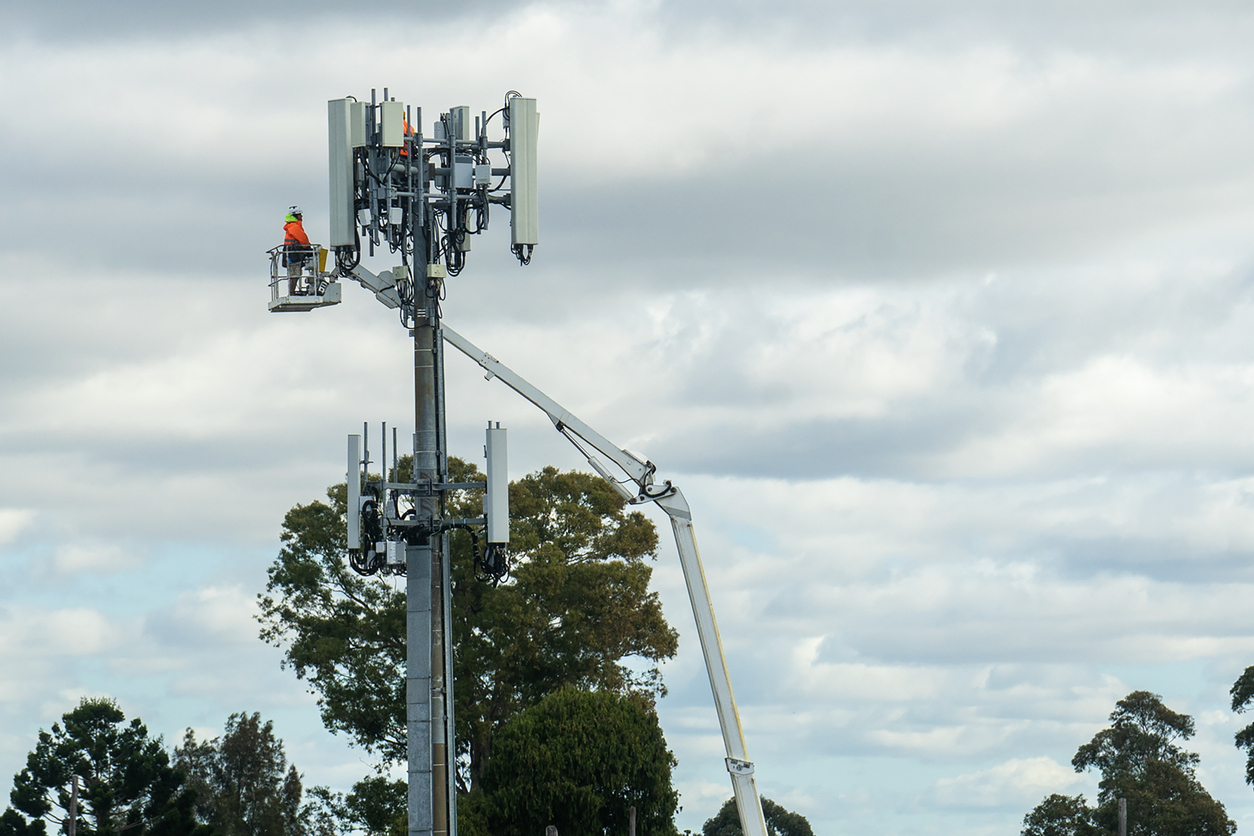Former BEAD (Broadband Equity Access and Deployment Program) director Evan Feinman is not a fan of using BEAD funds on satellite internet technologies such as Starlink. BEAD is the program passed in 2021 that would take federal tax dollars and award them across the states to expand internet access in rural areas. The costly and lengthy program’s timeline for administration means that states are only now in the process of determining how they will award the subsidies. As of writing this, BEAD funds still have not connected a single individual to the internet.
Feinman’s sharp remarks come as his contract as director in charge of administrating the $42 billion in federal funds was not renewed. His main critiques are as follows:
Proposed BEAD program changes shift from a fiber-first approach to a “technology-neutral” one.
Favoring Starlink over fiber could leave rural Americans with slow internet, as Starlink’s speeds don’t meet BEAD’s requirements (100Mbps down, 20Mbps up, <100ms latency) and have dropped as more users join.
Starlink’s $120/month cost is higher than most providers, and its scalability for future demand is questionable.
Prioritizing satellite over fiber could harm rural education, economy, and health outcomes.
This shift risks wasting a once-in-a-lifetime broadband investment by favoring a political ally (Elon Musk) over long-term solutions.
Each concern is worth addressing. If this federal subsidy program is to exist, opening the doors to more flexible options like Starlink and other satellite choices is a good move. Better yet, the government should get out of the business of picking winners and losers altogether.
“Technology neutral” shift
Even as Feinman is a proponent of a fiber-focus, using a more neutral approach is not inherently a bad thing. Not all areas of the U.S. are the same, and each should be approached case by case. As the linked article above mentions, some fiber installation costs can be upwards of $130,000 per house. If the end goal is to provide good access for rural areas to bridge the digital divide, we should be looking to get the most bang for our buck. Many rural areas don’t have internet connections because the cost to implement would not be sustained due to lack of demand. Forcing a top-tier option in areas where even basic access isn’t demanded makes little sense. All options should be on the table.
Starlink doesn’t meet BEAD speed requirements
While moving to satellite doesn’t necessitate only Starlink, other competitors either don’t qualify or are in their infancy, posing capacity support issues. This type of subsidy, however, could ostensibly be used to catch up to Starlink and expand their own capacity. As for Starlink, even while critics complain about dropping quality with an increasing customer base, that’s what these funds are meant to address. Funding new areas of expansion would most likely also entail funding more satellites to increase customer capacity. (It’s worth pointing out, however, that relying on subsidies for improvements and innovations has historically had the opposite of the intended effect. This would be true for both improvements to Starlink as well as attempting to future proof rural areas with fiber.)
Even still, the speeds Starlink can currently offer in most areas, particularly rural parts of the country where demand is already low, can be adequate. Even as BEAD has written out speed requirements, the speed needs for rural areas are necessarily lower than high-density cities already. As rural areas expand and develop, the need for better options may arise, but at that point the customer base can support natural competition for companies to build out more options, including but not limited to fiber.
Starlink is expensive and not scalable
If the end goal is to bridge the digital divide, we should already be looking for options that allow the most people who want internet to get it. Subsidizing satellite options could very well mean negotiating with Starlink to offer reduced rates for rural customers. Of course, the concern about Starlink’s price point is ironic when considering the only way fiber could be installed IS the massive subsidy.
Alternatively, using the funds towards satellite options could arguably increase competition, forcing companies to reduce rates and/or increase speeds, thus providing consumers with the combination of speed and price that suits them.
Unequal outcomes for rural areas in education, economy, and health
This is a valid concern but greatly exaggerated in this context. As Thomas Sowell writes in Wealth, Poverty, and Politics, “Like other geographic features, location is not egalitarian. The fate of whole races, nations, and civilizations can depend on whether they happen to be located in the right place at the right time or in the wrong place at the wrong time. Moreover, what was the right place, or the wrong place, has varied greatly over the centuries.” To this end, we should acknowledge that the very nature of a rural area can create inequalities in terms of access to high-speed internet. For some, that isolation is a feature, not a bug. As previously noted, even if we were to engage in fiber-first, the costs to place and connect these locations are unequal.
Is this an argument to bring rural areas in exact parity with the highest speeds available? Not necessarily. The same challenges that make bringing fiber to rural areas are likewise prohibitions for other necessary developments that would turn these rural areas into modern education, economic, and health centers. But the diversity of our country is a strength, not a weakness. Not every area should be urbanized. To pretend the difference between 100mbps down and 1TB down for the average neighborhood would alone improve all of these factors is a far cry. Where fiber can make sense in rural areas to help with hospitals or education centers, those are still on the table. But it’s silly to assume that every rural home must achieve ten times what is widely considered good speeds in order for the areas to not fall behind.
Favoring political allies
While there is certainly merit to the idea that the government shouldn’t pick winners and losers, Feinman only seems to care if this prevents Elon Musk’s Starlink from being rewarded. In fact, subsidies necessarily mean the government is rewarding some and punishing others. Even by setting regulatory standards of which companies qualify and what options they must provide, the government already is excluding some players from even having a chance to compete. Last May, the Rural Broadband Association wrote a letter asking for revisions to the regulations attached to BEAD, as they would price out small internet service providers. By expanding options to shift away from “fiber-first” and include satellite, there is concern about the government rewarding friends – but that was true the very first day the program was activated.
While Evan Feinman oversaw BEAD, the fiber-first only model would have caused the program to spend on a problem private markets already are solving at an astronomically high rate. While the best-case scenario is a future-proofed infrastructure, the affordability requirements make it highly unlikely that many providers would be able to sustain service in meaningful ways without even more government subsidies. Central planners love to project into the future and claim to know what’s best, but while fiber may be unbeatable today, that’s not necessarily true tomorrow (see Todd Myers’ excellent analysis addressing this very topic on economic development plans for Washington state here).
The history of federal subsidies shows a chilling effect on innovation in the sectors involved. Notably, when congress granted Edward Collins federal subsidies for his steamships in 1847, the luxurious, but inefficient and sluggish, ships halted progress in shipbuilding. While American shipbuilders had started to innovate with iron ships, rather than wooden, since 1840, the federal dollars backing Collins’ enterprise in 1847 meant competitors couldn’t risk further innovations were they to stay alive. While experimenting with iron ships was costly and risky, Collins was receiving federal money to offset his unprofitable ventures. Even without taking risks, competitors struggled to stay afloat. It wasn’t until Cornelius Vanderbilt outcompeted Collins with his own iron ships (so hard that congress removed itself from the steamship subsidy game altogether) that investment into iron ships was able to flourish. A Senator from Virginia lamented “the whole system was wrong...it ought to have been left, like any other trade, to competition,” and the same is true of the BEAD program. While fiber is a fantastic technology today, and even satellite options like Starlink provide an excellent cost-to-benefit ration, if we are truly future-looking, we should let the market continue to grow the sector without the heavy hand of the government tipping the scales.





